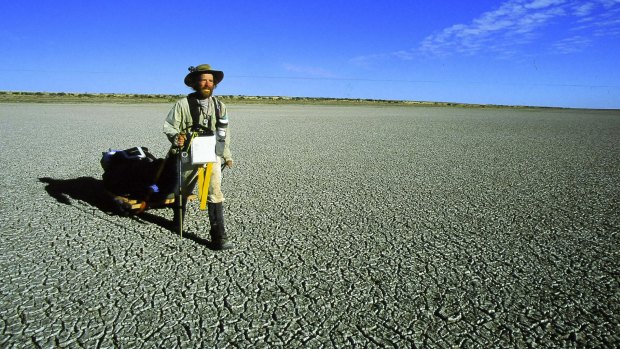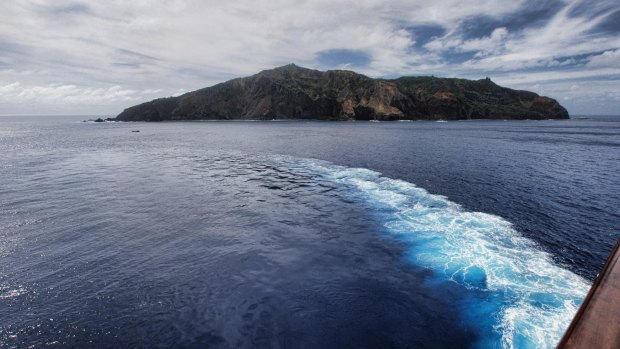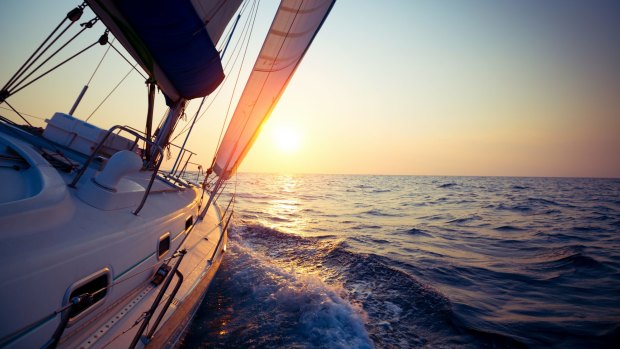This was published 5 years ago
Three travellers who truly understand what it’s like to be isolated
By Craig Tansley

Jon Muir took 128 days to become the first person to traverse the Australian continent unassisted.
Jon Muir knows all about isolation. Australia's greatest living explorer once walked 2500 kilometres from the bottom of Australia to the top. It took him 128 days to become the first person to traverse the continent unassisted, and in doing so he spent less than 12 hours with other people.
"Time alone is good for the soul," says Muir. "We're good at skimming the surface, but it takes isolation to connect us with our deeper selves."
Muir has also paddled a kayak along 5000 kilometres of remote coastline while fighting off saltwater crocs, walked to both the North and South poles, and he was the first Westerner to climb Mt Everest without Sherpas.
"You have to learn to be alone," he says. "It takes mental discipline. But it's wonderful – everything becomes sharp and clear. Explore a few things in your mind that you haven't before."
While pandemic-induced isolation doesn't faze him – he lives on a remote property in southern Victoria – there's one place in which he does feel isolated.
"Being in a big city, surrounded by millions of people but not having a connection with any of them," he says. "It's hard to form an emotional connection with concrete – and with people who think connecting with the world comes through their phone."
Watch Muir's journey in Alone Across Australia or stay with Muir on his farm with World Expeditions (worldexpeditions.com).

.
It's not until you're on a longboat charging into Bounty Bay that you appreciate how small Pitcairn Island is – just five square kilometres. Some 6000 kilometres from the nearest continent, it remains one of the world's most remote locations, having been settled in 1790 by mutineers intent on disappearing forever. With no airport or harbour, more people will summit Everest in a year than visit the tiny volcanic island.
Currently home to 47 mutineer descendants, these are some of the most isolated people on the planet, yet they wouldn't have it any other way.
"We rarely feel isolated," says mayor Charlene Warren-Peu, adding that the current record for not leaving Pitcairn is 23 years. "When you live in the middle of the South Pacific, it's not an issue we ever focus on."
"Isolation is as much a state of mind as it is a geographical location," says travel co-ordinator Heather Menzies. "On Pitcairn, we're accustomed to dealing with both."
For more on Pitcairn Island, see visitpitcairn.pn.

Credit: Getty Images
Lone sailor Jacquie Hope didn't like being on her own – that is, until she sailed around the world solo on a 10-metre yacht. A relationship breakup triggered the expedition, which she'd wanted to do since the age of seven. So, in February 2016, she set sail from Melbourne and didn't come home for 3½ years.
"The thought of being solo bothered me before I sailed," says Hope. "But when my journey started, it didn't bother me a bit. The isolation became part of a deeper, inner journey."
She and her yacht were hammered by 100-kilometre winds and eight-metre seas, which knocked the vessel on its side. She nearly lost her mast and had to sail 3000 kilometres to repair it in Africa. For much of her time spent sailing, she had no outside contact.
But it was her journey across the Pacific, from Panama to Tahiti, which really tested her. For 49 days and 8000 kilometres, she drifted at sea, with no communications. Her only company was the occasional dolphin, although she'd celebrate occasions like crossing the equator in her best dress, dancing on her tiny deck with a pina colada.
"I thought I'd go crazy without anyone to talk to, without anyone to hug," says Hope. "But the isolation gave me enormous insights I'd never normally have had."
For more on her journey, go to shantiatsea.blogspot.com.
What to read
The Mutiny on the Bounty. One of Australia's best-read authors, Peter FitzSimons, explores the final, fatal journey of the Bounty on its way to Pitcairn Island. He brings that voyage to life and tells us exactly what happened to the mutineers. (Spoiler alert: they didn't end up drinking sundowners in paradise and living happily ever after.)
This article appears in Sunday Life magazine within the Sun-Herald and the Sunday Age on sale May 31.
Sign up for the Traveller Deals newsletter
Get exclusive travel deals delivered straight to your inbox. Sign up now.